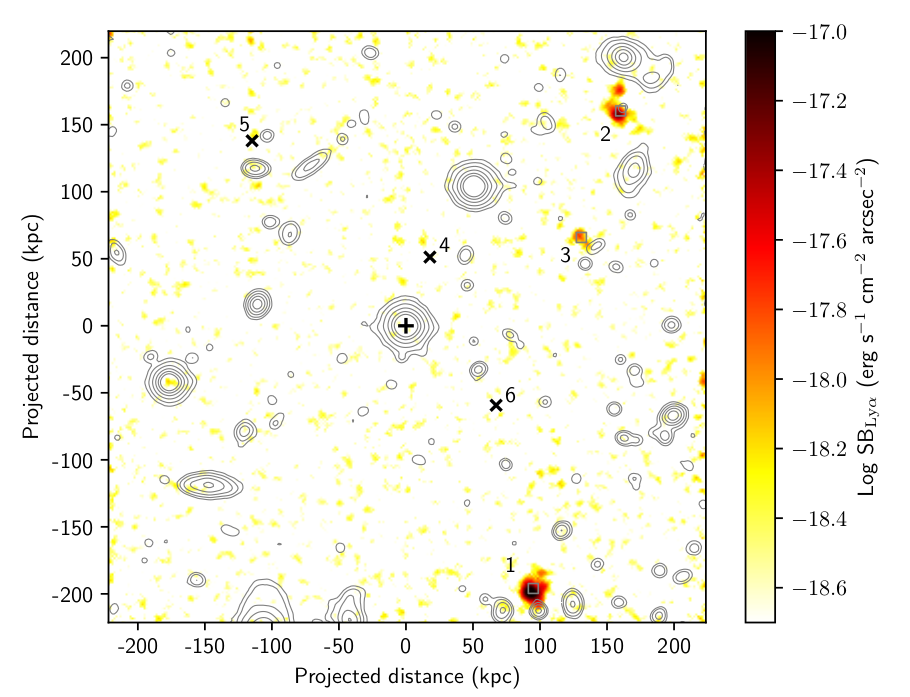CEA News, November 2019
Pristine gas in the MUSE Analysis of Gas around Galaxies Survey
Members of the CEA have recently published a study of one of the most pristine systems detected in the Universe, unpolluted by the elements produced by stars. The results are the first to be published from the MUSE Analysis of Gas around Galaxies (MAGG) large program on the European Southern Observatory's Very Large Telescope, and opens a door into the study of early galaxy formation.

The survey maps the positions and properties of 100s of galaxies in regions of the Universe known to contain vast dark clouds of material, known as Lyman-Limit systems (LLSs). LLSs are detected in high-resolution spectroscopy of distant bright quasars, whereby the light from this background source is absorbed as it passes through an LLS leaving an 'absorption trough' in the spectrum.
These first published results from the survey describe observations of one of the most metal poor LLSs yet known (shown by the black plus sign in the figure). The origin of this gas cloud is of particular interest as the lack of metals suggests that it could be a remnant of the very first stars to form in our Universe.
Previous studies have suggested that this pristine cloud should exist in relative isolation with no nearby galaxies. However, the MAGG survey has shown that it actually lies within an over-density of galaxies (shown by the squares and black crosses). Taken together with the small number of other similar systems studied to date, this indicates that there is a range of different environments around these structures. The full MAGG survey has observations of ~50 more gas clouds and will therefore enable a statistical analysis of the link between gas and galaxies.

